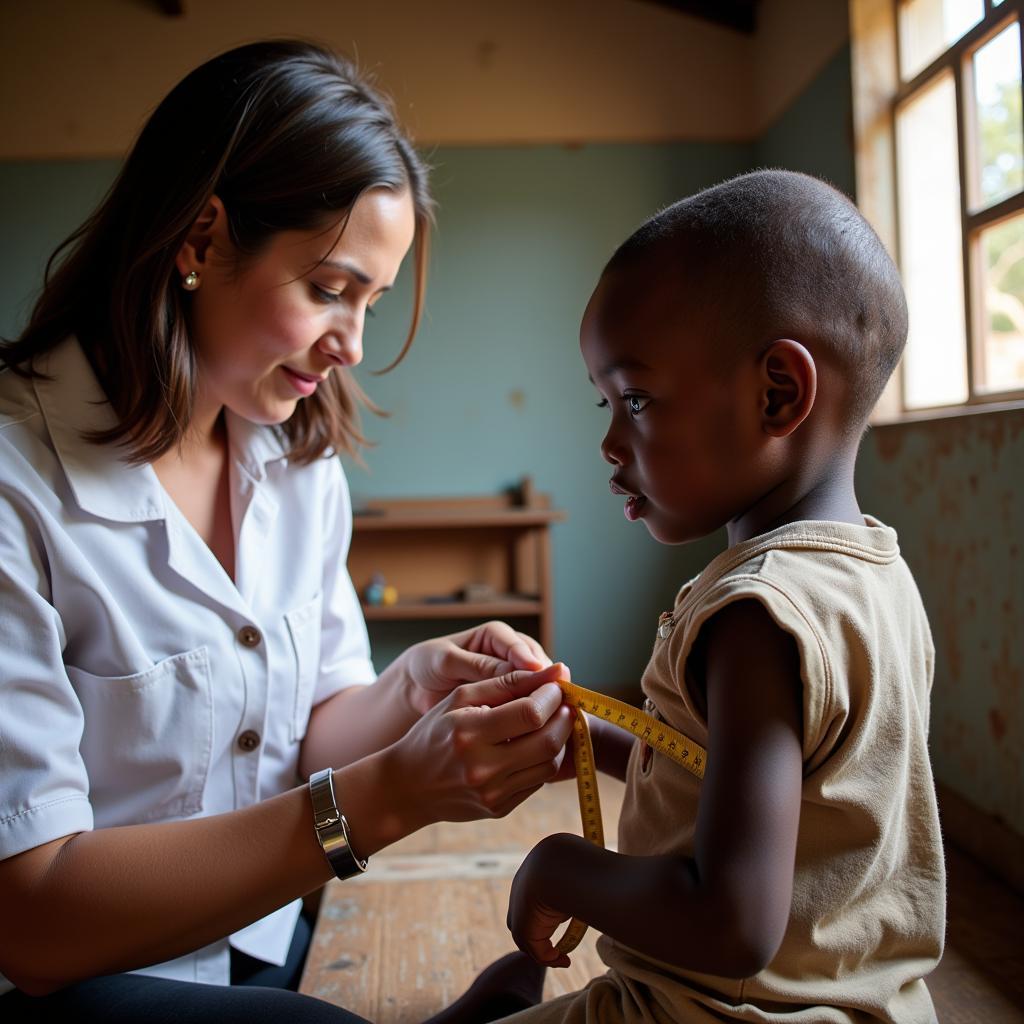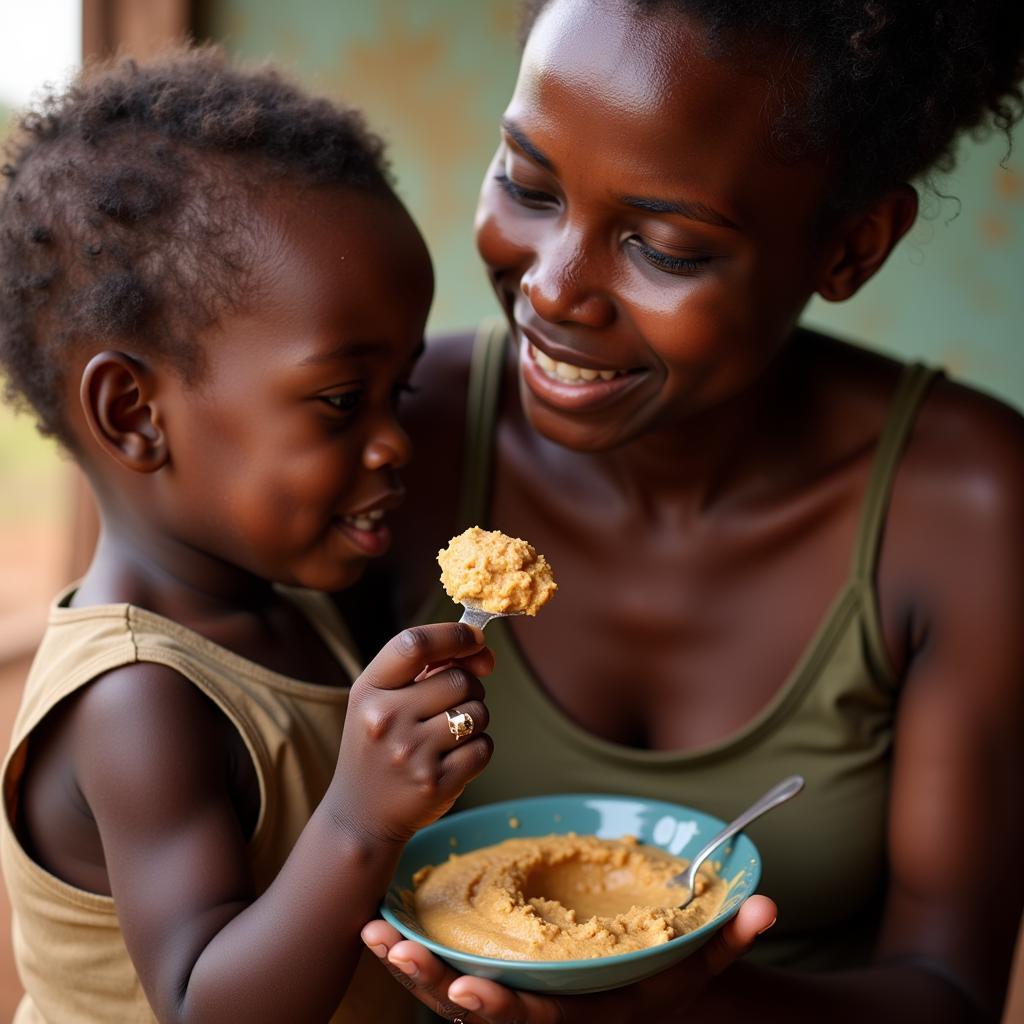Understanding and Combating Marasmus in African Children
Marasmus, a severe form of malnutrition, is a pressing health concern affecting children in various parts of Africa. This condition, characterized by extreme wasting of muscle and fat, arises from inadequate calorie intake and often coexists with other deficiencies. The sight of children with marasmus, their tiny bodies ravaged by hunger, is a stark reminder of the challenges many African communities face. But what exactly causes this devastating condition, and how can we work towards a future where every child has the opportunity to thrive?
The Multifaceted Roots of Marasmus in Africa
While poverty stands as a significant contributor to marasmus, attributing its prevalence solely to a lack of resources would be an oversimplification. The issue runs deeper, intertwining with various socio-economic and environmental factors that contribute to food insecurity and malnutrition:
- Poverty: Limited financial resources restrict access to nutritious food, clean water, and healthcare.
- Food Insecurity: Droughts, floods, and conflicts can disrupt agricultural production and distribution, leading to food shortages and price spikes.
- Inadequate Infant Feeding Practices: Early cessation of breastfeeding, coupled with insufficient knowledge about appropriate complementary foods, can deprive infants of essential nutrients.
- Infectious Diseases: Recurrent infections like diarrhea and pneumonia further exacerbate nutrient loss and impair the body’s ability to absorb vital nutrients.
- Lack of Education: Limited awareness about proper nutrition and hygiene practices hinders efforts to prevent and manage malnutrition effectively.
 Child displaying symptoms of marasmus
Child displaying symptoms of marasmus
Recognizing the Signs: Identifying Marasmus in Children
Early detection of marasmus is crucial for effective intervention. Parents, caregivers, and healthcare workers must be vigilant in observing children for the following signs:
- Severe Weight Loss: A child with marasmus will be significantly underweight for their age.
- Wasting: Visible loss of muscle mass and subcutaneous fat, making bones appear prominent.
- Distended Abdomen: Despite the overall thinness, children with marasmus may have a swollen abdomen due to fluid retention or organ enlargement.
- Changes in Skin and Hair: The skin may become dry, thin, and lose its elasticity. Hair loss and discoloration are also common.
- Irritability and Lethargy: Children with marasmus are often irritable and lack energy, often appearing withdrawn and apathetic.
 Healthcare worker measuring a child for marasmus
Healthcare worker measuring a child for marasmus
Combating Marasmus: A Multi-pronged Approach
Addressing marasmus in Africa demands a multifaceted approach that tackles the underlying causes and provides immediate nutritional support. Here are some key strategies:
- Therapeutic Feeding Programs: Providing ready-to-use therapeutic foods (RUTFs), like Plumpy’nut, can deliver life-saving nutrition to severely malnourished children. These nutrient-rich pastes are easy to consume and require no cooking.
- Community-Based Management of Acute Malnutrition (CMAM): This approach empowers communities to identify and treat malnourished children at home or in local health centers. CMAM relies on community health workers to provide RUTFs, monitor progress, and educate families.
- Promoting Breastfeeding: Encouraging exclusive breastfeeding for the first six months of life and continued breastfeeding alongside appropriate complementary feeding practices are crucial for preventing malnutrition.
- Improving Food Security: Investing in sustainable agriculture, strengthening food distribution networks, and implementing social safety nets can enhance access to nutritious food.
- Water, Sanitation, and Hygiene (WASH): Improving access to clean water, sanitation facilities, and promoting hygiene practices can reduce the incidence of infections that contribute to malnutrition.
 Mother feeding her child therapeutic food
Mother feeding her child therapeutic food
A Future Free from Marasmus: A Shared Responsibility
Eradicating marasmus in Africa is not merely a health objective but a moral imperative. It requires a collective effort from governments, healthcare providers, international organizations, and individuals to address the interconnected factors contributing to malnutrition. By investing in sustainable solutions, empowering communities, and advocating for policies that prioritize child nutrition, we can create a future where every child in Africa has the opportunity to reach their full potential.
FAQs about Marasmus in African Children
1. What is the difference between marasmus and kwashiorkor?
While both are forms of severe acute malnutrition, marasmus primarily results from inadequate calorie intake, leading to severe wasting. Kwashiorkor, on the other hand, is characterized by insufficient protein intake, often presenting with edema (swelling), skin lesions, and changes in hair color.
2. Can marasmus be treated?
Yes, marasmus is treatable, especially if detected early. Treatment usually involves a combination of therapeutic feeding with RUTFs, addressing underlying medical conditions, and providing nutritional education to families.
3. How can I help combat marasmus in Africa?
You can contribute by supporting organizations working to improve child nutrition in Africa, raising awareness about the issue, and advocating for policies that address poverty and food insecurity.
4. What are the long-term consequences of marasmus?
If left untreated, marasmus can have devastating long-term consequences, including stunted growth, impaired cognitive development, weakened immune systems, and increased susceptibility to chronic diseases.
5. What are some traditional African foods that can help prevent marasmus?
Many nutrient-rich traditional African foods can help prevent malnutrition, such as:
- Moringa: A highly nutritious plant with a high content of vitamins, minerals, and antioxidants.
- Baobab: A fruit rich in vitamin C, fiber, and antioxidants.
- Sorghum: A drought-tolerant grain rich in carbohydrates, protein, and fiber.
- Beans and Legumes: Excellent sources of protein, fiber, and various micronutrients.
Need Help? Contact Us
If you need support or have any questions, please contact us:
Phone Number: +255768904061
Email: kaka.mag@gmail.com
Address: Mbarali DC Mawindi, Kangaga, Tanzania.
We have a 24/7 customer support team available to assist you.
